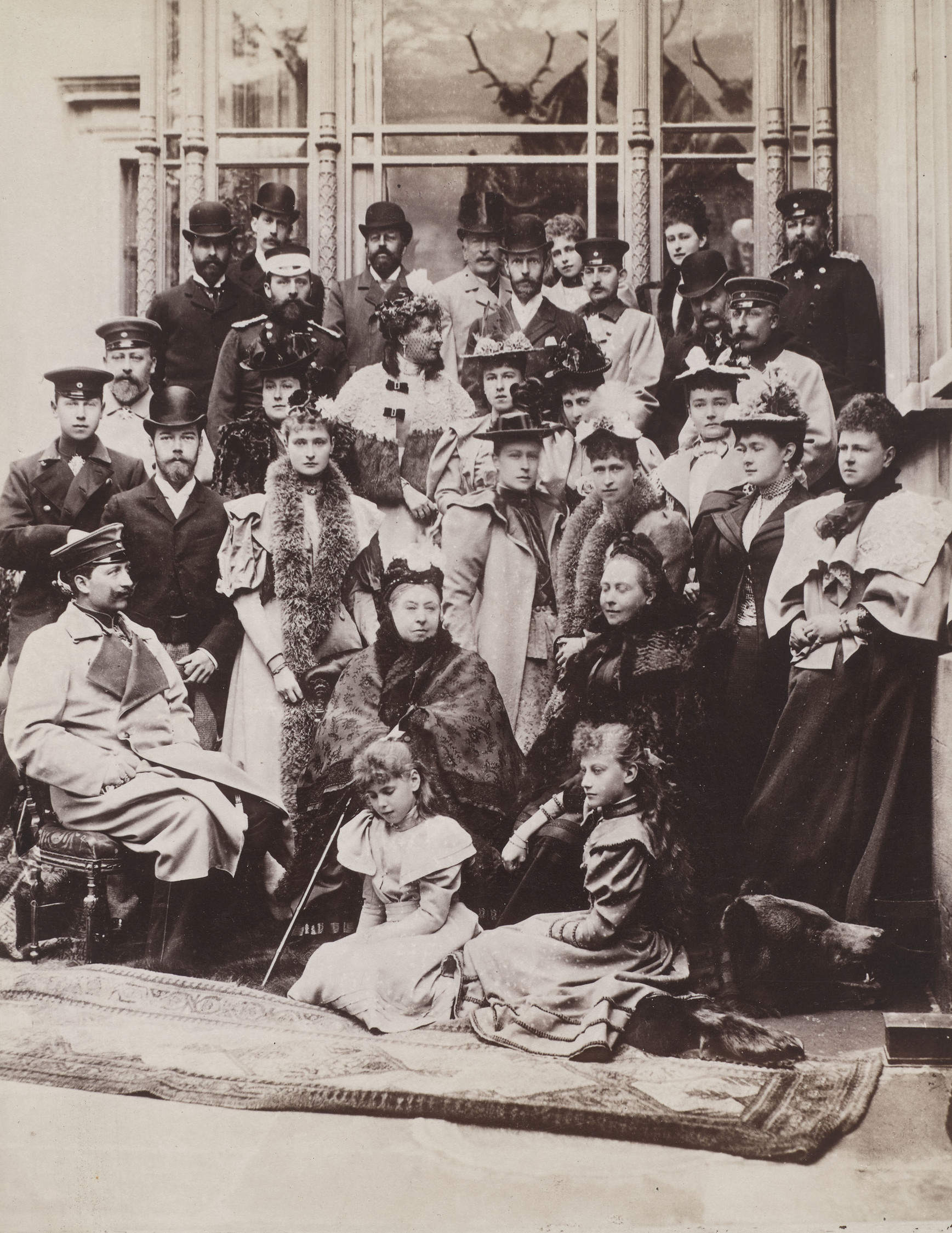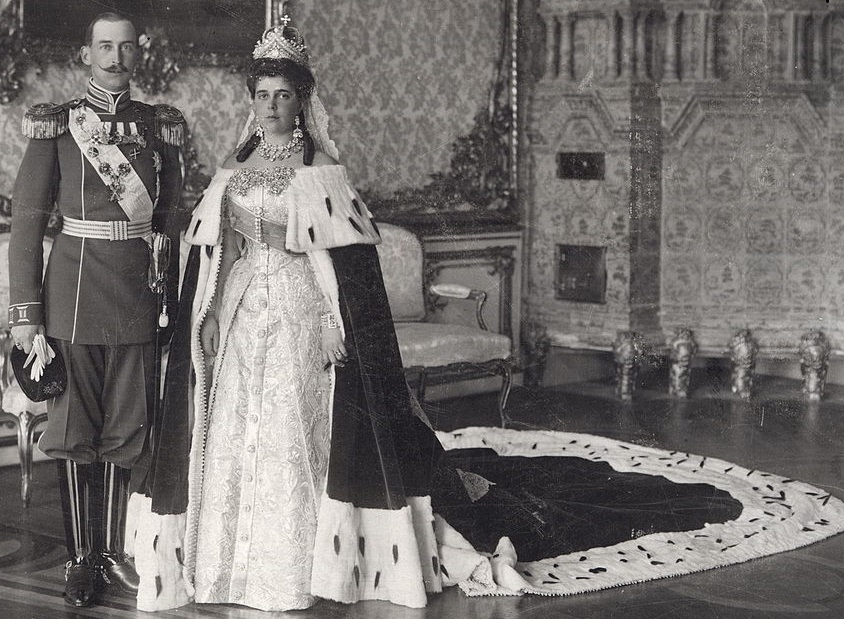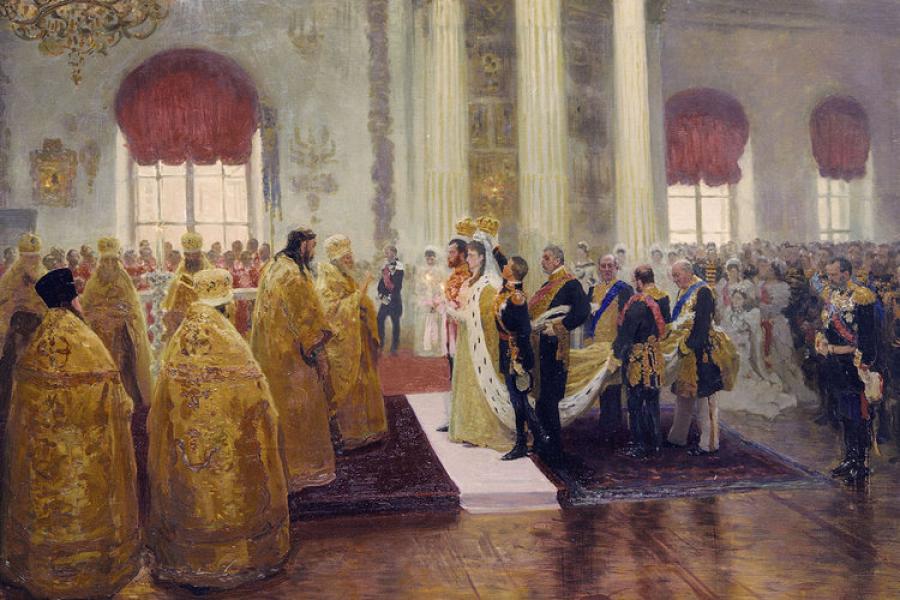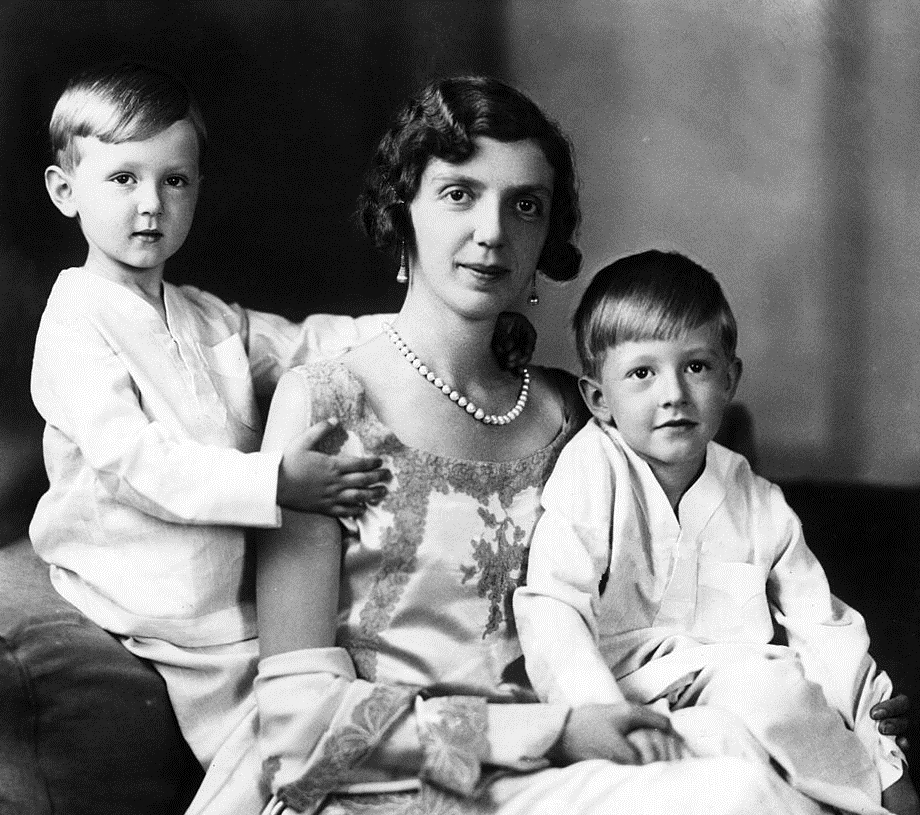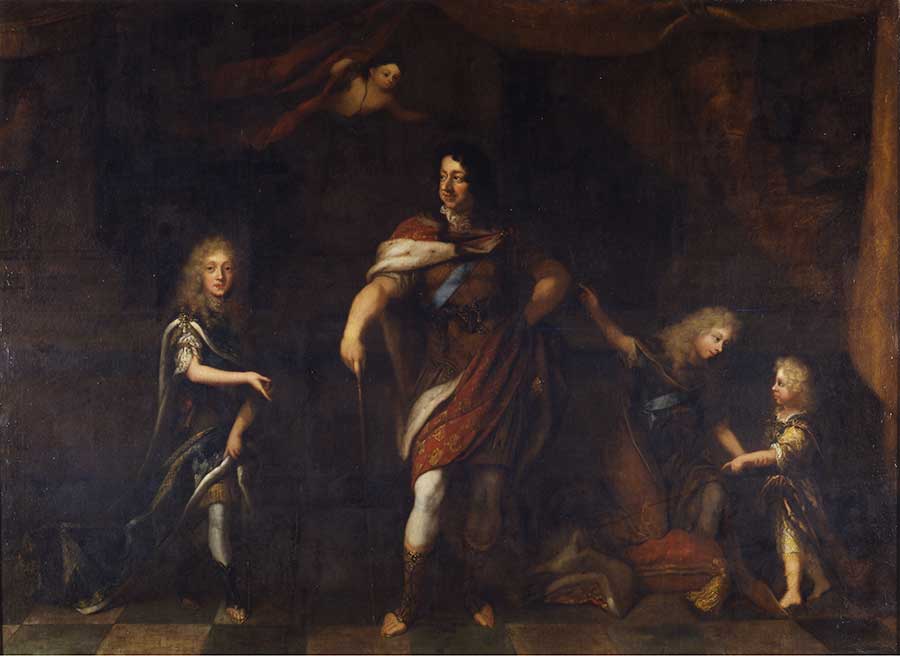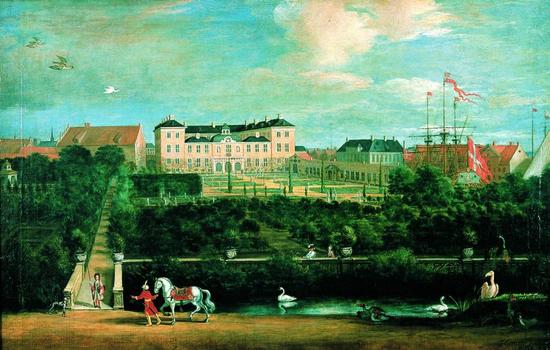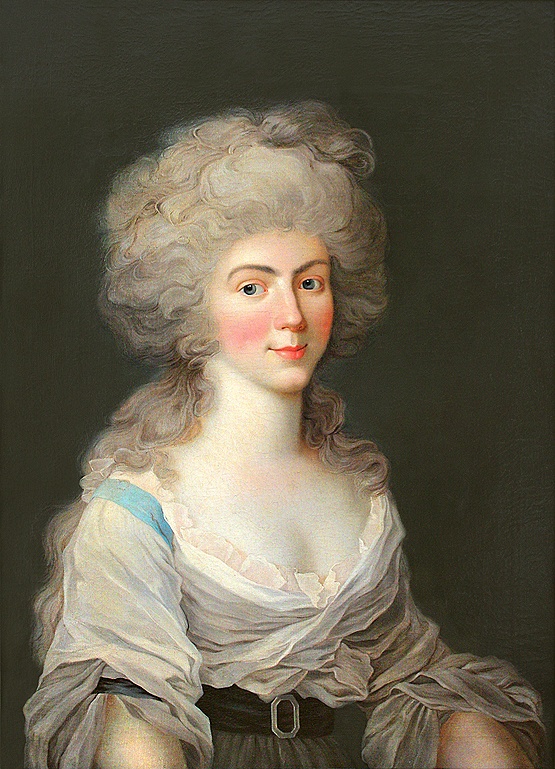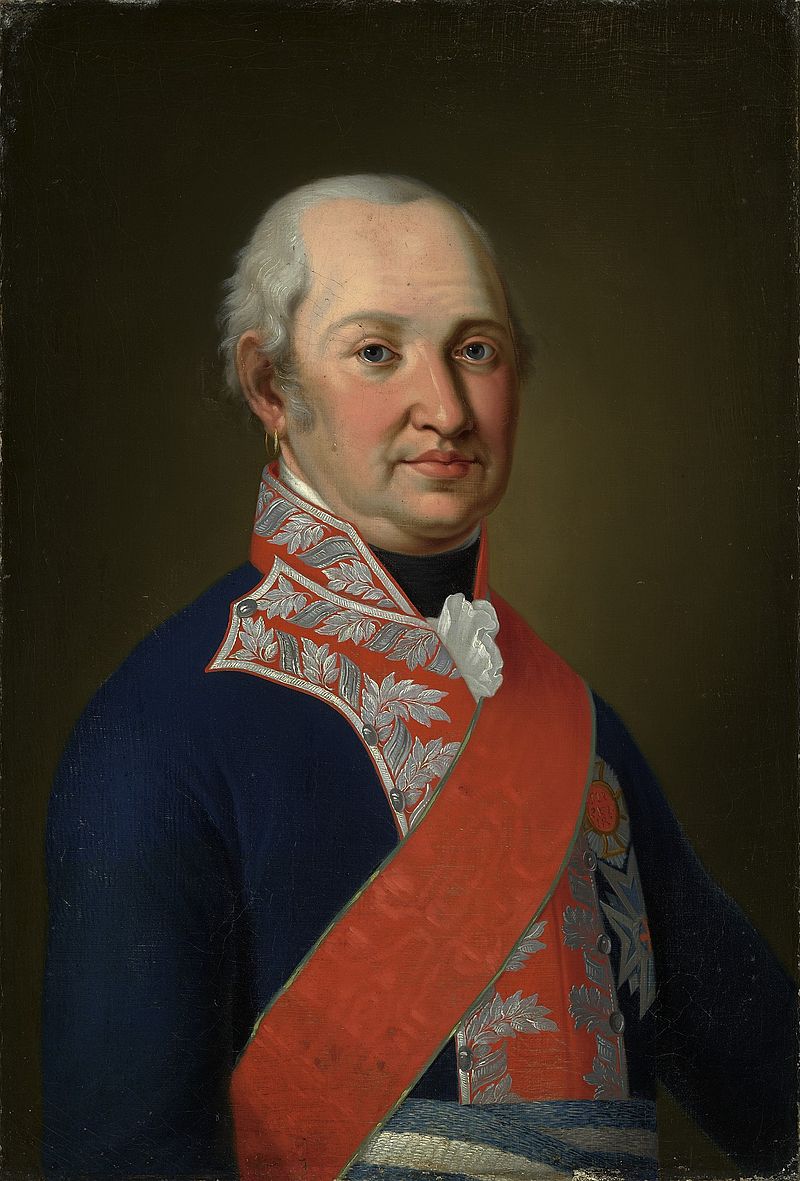by Susan Flantzer
© Unofficial Royalty 2025

Stadtkirche Darmstadt; Credit – Wikipedia
The House of Hesse-Darmstadt was one of several branches of the House of Hesse. After the fall of the Holy Roman Empire in 1806, the Landgraviate of Hesse-Darmstadt was raised to the Grand Duchy of Hesse, and Ludwig X, Landgrave of Hesse-Darmstadt, became the first Grand Duke, Ludwig I. Several years later, at the Congress of Vienna, Ludwig I was forced to cede his Westphalian territories, but in return was given the Rheinhessen region, and the Grand Duchy of Hesse became the Grand Duchy of Hesse and by Rhine. Darmstadt was the capital of the Landgraviate of Hesse-Darmstadt, the Grand Duchy of Hesse, and the Grand Duchy of Hesse and by Rhine. Today, the territory that encompassed the Grand Duchy of Hesse and by Rhine is in the German state of Hesse.

The interior of the Stadtkirche Darmstadt; Credit – Wikipedia
The Stadtkirche Darmstadt (Darmstadt City Church) is the main Protestant church in Darmstadt, Germany. However, the church we see today was reconstructed from 1946 to 1952 after World War II bombings in 1943 and 1944 caused major damage. Originally a Roman Catholic church, in 1526, the Stadtkirche Darmstadt became an Evangelical Lutheran church during the German Reformation. Today, the Stadtkirche Darmstadt is a member of the Protestant Church in Hesse and Nassau (German: Evangelische Kirche in Hessen und Nassau), a United Protestant church body in the German states of Hesse and Rhineland-Palatinate.
***********
History
During the 8th or 9th century, a Frankish burial chapel was built on the site of Stadtkirche Darmstadt. Eventually, a chapel dedicated to the Blessed Virgin Mary was built on the site as a branch of the parish church in Bessungen. In 1369, Archbishop Gerlach of Nassau (link in German) raised the chapel to a parish church, and an addition was completed around 1380. Around 1420, the Counts of Katzenelnbogen, who ruled the County of Katzenelnbogen, rebuilt the church. The County of Katzenelnbogen existed from 1095 until 1479, when it was inherited by the Landgraves of Hesse.

Georg I, Landgrave of Hesse-Darmstadt; Credit – Wikipedia
Georg I, Landgrave of Hesse-Darmstadt, the founder of the Darmstadt line of the House of Hesse, built the crypt in Darmstadt City Church in 1576 after his firstborn son, five-month-old Philipp Wilhelm, died. Georg I intended the crypt to be the burial site for the House of Hesse-Darmstadt. The crypt initially consisted of an elongated room with an unadorned barrel vault beneath the northern choir wall. A few years later, a second vault was added, extending across the entire width of the choir. In 1615, Ludwig V, Landgrave of Hesse-Darmstadt, had both crypts decorated with colored and gilded stucco.

Epitaph for Georg I and his wife Magdalena: Credit – Wikipedia
On February 26, 1587, 35-year-old Magdalena of Lippe, Landgravine of Hesse-Darmstadt, wife of Georg I, Landgrave of Hesse-Darmstadt, died giving birth to her tenth child, who also died. Magdalena was buried in the choir of the Stadtkirche Darmstadt. Her husband Georg built an epitaph behind the high altar, which would serve as a memorial to Magdalena and himself. When Georg I died in 1596, he was buried with his wife in the choir of the Stadtkirche Darmstadt.
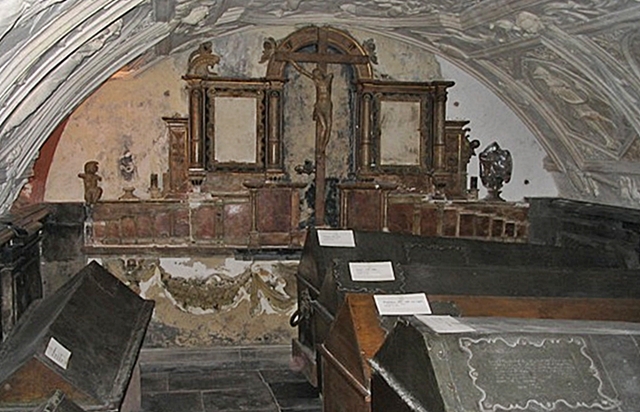
One of the crypts at the Stadtkirche Darmstadt; Credit – www.findagrave.com
From 1615 to 1617, the crypt was enlarged on the orders of Ludwig V, Landgrave of Hesse-Darmstadt. The church tower was rebuilt from 1627 to 1631 during the reign of Georg II, Landgrave of Hesse-Darmstadt. Elisabeth Dorothea of Saxe-Gotha-Altenburg, Landgravine of Hesse-Darmstadt, the second wife of Ludwig VI, Landgrave of Hesse-Darmstadt, had a great interest in the church and, under her orders, the main nave was rebuilt and the side aisles were widened from 1686 to 1687.
After 1806, when the Landgraviate of Hesse-Darmstadt was raised to the Grand Duchy of Hesse, Darmstadt’s population increased significantly. To accommodate the growing population, a new Catholic church, Saint Ludwig’s Catholic Church (link in German), was built, and the Protestant congregation of the Stadtkirche Darmstadt was also to receive a new church.
The original plan to demolish the centuries-old Stadtkirche Darmstadt and construct a new church was met by protests from the citizens of Darmstadt. Instead, architect and town planner Georg Moller, the architect of Saint Ludwig’s Catholic Church and the Old Mausoleum at Rosenhöhe Park in Darmstadt, planned a massive renovation of the Stadtkirche Darmstadt, but these plans were also rejected.
After the second plans were rejected, Georg Moller and city architect Johannes Jordan proposed a minor renovation. They planned a completely new nave with side aisles of equal height, keeping the orientation to the east. A Gothic style was chosen that would harmonize better with the existing Gothic choir. This project was completed by 1844, thanks to a donation from the merchant Johann Heinrich Fuhr (link in German). In 1929, Stadtkirche Darmstadt was renovated under the supervision of Karl Gruber (link in German), German architect, town planner, monument conservator, and architectural historian. The nave received a transverse roof, the church tower’s lantern was enlarged, and the outer walls were lowered by two meters.
World War II

Darmstadt after the bombing during the night of September 11/12 in 1944; Credit – Wikipedia
Darmstadt was bombed several times during World War II. The most destructive bombing occurred during the night of September 11/12, 1944, when the Royal Air Force bombed the city. The bombing caused a massive fire. Ninety-nine percent of the old town and city center was destroyed, and seventy-eight percent of Darmstadt’s buildings were destroyed, including the Stadtkirche Darmstadt. Karl Gruber, who renovated the church in 1929, supervised its reconstruction from 1946 to 1952.
***********
Burials at Stadtkirche Darmstadt

Coffins in a crypt at the Stadtkirche Darmstadt; Credit – www.findagrave.com
After the completion of the New Mausoleum at Rosenhöhe Park in Darmstadt in 1910, Grand Duke Ernst Ludwig of Hesse and by Rhine had the coffins of the Grand Dukes and their families moved. They were transferred from the crypt of the Stadtkirche Darmstadt to the Old Mausoleum (link in German) at Rosenhöhe Park, which was built in 1826 following the death of Princess Elisabeth, the five-year-old daughter of Grand Duke Ludwig II and Grand Duchess Wilhelmine. The coffins of the Landgraves of Hesse-Darmstadt and their families remained in the city church.
Current burials at the Stadtkirche Darmstadt:
- Philipp Wilhelm of Hesse-Darmstadt (born and died 1576), son of Georg I, Landgrave of Hesse-Darmstadt
- Philipp VI, Count of Waldeck (1551 – 1579)
- Marie Hedwig of Hesse-Darmstadt (1580 – 1582), daughter of Georg I, Landgrave of Hesse-Darmstadt
- Magdalene of Hesse-Darmstadt (born and died 1586), daughter of Georg I, Landgrave of Hesse-Darmstadt
- Magdalena of Lippe, Landgravine of Hesse-Darmstadt (1552 – 1587), first wife of Georg I, Landgrave of Hesse-Darmstadt, died due to childbirth complications while delivering Johann below
- Johann of Hesse-Darmstadt (born and died 1587), son of Georg I, Landgrave of Hesse-Darmstadt
- Georg I, Landgrave of Hesse-Darmstadt (1547 – 1596)
- Sabine von Anhalt (born and died 1599)
- Heinrich of Hesse-Darmstadt (1590 – 1601), son of Georg I, Landgrave of Hesse-Darmstadt
- Emrich of Leiningen-Hartenberg (born and died 1607)
- Marie of Braunschweig-Lüneburg (1576 – 1610)
- Hedwig of Hesse-Darmstadt (1613 – 1614), daughter of Ludwig V, Landgrave of Hesse-Darmstadt
- Magdalene of Brandenburg, Landgravine of Hesse-Darmstadt (1582 – 1616), wife of Ludwig V, Landgrave of Hesse-Darmstadt
- Eleonore of Württemberg, Landgravine of Hesse-Darmstadt (1552 – 1618), second wife of Georg I, Landgrave of Hesse-Darmstadt
- Ludwig V, Landgrave of Hesse-Darmstadt (1577 – 1626)
- Amalie of Hesse-Darmstadt (1607 – 1627), daughter of Ludwig V, Landgrave of Hesse-Darmstadt
- Anna Maria of Hesse-Darmstadt (born and died 1627), daughter of Georg II, Landgrave of Hesse-Darmstadt
- Heinrich of Hesse-Darmstadt (1612 – 1629), son of Ludwig V, Landgrave of Hesse-Darmstadt
- (1592 – 1641), Chancellor of the Landgraviate of Hesse-Darmstadt
- Johann of Hessen-Darmstadt (1642 – 1643), son of Georg II, Landgrave of Hesse-Darmstadt
- Agnes of Hesse-Darmstadt (born and died 1645), daughter of Georg II, Landgrave of Hesse-Darmstadt
- Magdalene Sybilla of Hesse-Darmstadt (1631 – 1651), daughter of Georg II, Landgrave of Hesse-Darmstadt
- Johann of Hesse-Darmstadt, Landgrave of Hesse-Braubach (1609 – 1651), son of Ludwig V, Landgrave of Hesse-Darmstadt
- Sophie Eleonore of Hesse-Darmstadt (born and died in 1653), daughter of Ludwig VI, Landgrave of Hesse-Darmstadt
- Georg of Hesse-Darmstadt (1654 – 1655), son of Ludwig VI, Landgrave of Hesse-Darmstadt
- Georg II, Landgrave of Hesse-Darmstadt (1605 – 1661)
- Dorothea Auguste of Holstein-Sonderburg (1636 – 1662), first wife of Georg of Hesse-Darmstadt, son of Georg II, Landgrave of Hesse-Darmstadt
- Marie Elisabeth of Holstein-Gottorp, Landgravine of Hesse-Darmstadt (1634 – 1665), first wife and first cousin of Ludwig VI, Landgrave of Hesse-Darmstadt
- Sophie Juliane of Hessen-Darmstadt (born and died 1668), daughter of ?
- Sophie Eleonore of Saxony, Landgravine of Hesse-Darmstadt (1609 – 1671), wife of Georg II, Landgrave of Hesse-Darmstadt
- Auguste Philippine of Hesse-Darmstadt (1643 – 1672), daughter of Georg II, Landgrave of Hesse-Darmstadt
- Johann of Hesse-Darmstadt (1672 – 1673), son of Georg II, Landgrave of Hesse-Darmstadt
- Auguste Magdalene of Hesse-Darmstadt (1657 – 1674), daughter of Ludwig VI, Landgrave of Hesse-Darmstadt
- Friedrich of Hesse-Darmstadt (1659 – 1676), son of Ludwig VI, Landgrave of Hesse-Darmstadt
- Georg of Hesse of Darmstadt (1632 – 1676), son of Georg II, Landgrave of Hesse-Darmstadt
- Ludwig VI, Landgrave of Hesse-Darmstadt (1630 – 1678)
- Ludwig VII, Landgrave of Hesse-Darmstadt (1658 – 1678), after the death of his father (above), reigned for 18 weeks before he died of dysentery
- Dorothea Charlotte of Brandenburg-Ansbach (1661 – 1705), first wife of Ernst Ludwig, Landgrave of Hesse-Darmstadt
- Carl Wilhelm of Hesse-Darmstadt (1693 – 1707), son of Ernst Ludwig, Landgrave of Hesse-Darmstadt
- Elisabeth Dorothea of Saxe-Gotha-Altenburg, Landgravine of Hesse-Darmstadt (1640 – 1709), second wife of Ludwig VI, Landgrave of Hesse-Darmstadt
- Eleonore Dorothea of Hesse-Darmstadt (1669 – 1714), daughter of ?
- Franz Ernst of Hesse-Darmstadt (1695 – 1716), son of Ernst Ludwig, Landgrave of Hesse-Darmstadt
- Charlotte of Hesse-Darmstadt (1720 – 1721), daughter of ?
- Charlotte of Hanau-Lichtenberg, Hereditary Princess of Hesse-Darmstadt (1700 – 1726), wife of the future Ludwig VIII, Landgrave of Hesse-Darmstadt
- Ernst Ludwig, Landgrave of Hesse-Darmstadt (1667 – 1739)
- Luise Auguste Magdalene of Hesse-Darmstadt (1725 – 1742), daughter of ?
- Johann Friedrich Karl of Hesse-Darmstadt (1726 – 1746), son of ?
- Georg Friedrich Wilhelm of Hesse-Darmstadt (born and died 1750), son of Prince Georg Wilhelm of Hesse-Darmstadt and grandson of Ludwig VIII, Landgrave of Hesse-Darmstadt
- Luise Charlotte, Countess of Epstein (1727 – 1753), daughter of Ernst Ludwig, Landgrave of Hesse-Darmstadt and his second morganatic wife, Luise Sophie von Spiegel zum Desenberg, Countess of Eppstein
- Ludwig VIII, Landgrave of Hesse-Darmstadt (1691 – 1768)
- Karoline of Nassau-Saarbrücken, Countess Palatine of Zweibrücken (1704 – 1774), wife of Christian III, Count Palatine of Zweibrücken
- Friederike Charlotte of Hesse-Darmstadt, Princess of Hesse-Kassel (1698 – 1777), daughter of Ernst Ludwig, Landgrave of Hesse-Darmstadt
- Sophie Charlotte Francisca of Leiningen-Heidesheim (born and died 1781)
- Georg Wilhelm of Hesse-Darmstadt (1722 – 1782), son of Ludwig VIII, Landgrave of Hesse-Darmstadt
- Amalie Marie Auguste of Bavaria (1790 – 1794), daughter of Maximilian I Joseph, King of Bavaria and Auguste Wilhelmine of Hesse-Darmstadt
- Carl Wilhelm of Hesse-Darmstadt (1757 – 1795), son of ?
- Auguste Wilhelmine of Hesse-Darmstadt, Duchess of Zweibrücken (1765 – 1796), daughter of Georg Wilhelm of Hesse-Darmstadt and granddaughter of Ludwig VIII, Landgrave of Hesse-Darmstadt
- Stillborn twin daughters of Ludwig X of Hesse-Darmstadt, later Ludwig I, Grand Duke of Hesse and by Rhine (1789)
- Gustav of Hesse-Darmstadt (1791- 1806), son of Ludwig X of Hesse-Darmstadt, later Ludwig I, Grand Duke of Hesse and by Rhine
Originally buried at the Stadtkirche Darmstadt, moved to the Old Mausoleum at Rosenhöhe:
- Luise of Hesse-Darmstadt, Grand Duchess of Hesse and by Rhine (1761 – 1829), wife of Grand Duke Ludwig I
- Ludwig I, Grand Duke of Hesse and by Rhine (1753 – 1830)
- Wilhelmine of Baden, Grand Duchess of Hesse and by Rhine (1788 – 1836), wife of Grand Duke Ludwig II
- Ludwig II, Grand Duke of Hesse and by Rhine (1777 – 1848)
- Prince Georg of Hesse and by Rhine (1780 – 1856), son of Grand Duke Ludwig I
- Prince Emil of Hesse and by Rhine (1790 – 1856), son of Grand Duke Ludwig II
- Ludwig III, Grand Duke of Hesse and by Rhine (1806 – 1877)
- Prince Karl of Hesse and by Rhine (1809 – 1877), son of Grand Duke Ludwig II
- Princess Elisabeth of Prussia (1815 – 1885), wife of Prince Karl
- Prince Heinrich of Hesse and by Rhine (1838 – 1900), son of Prince Karl
- Prince Wilhelm of Hesse and by Rhine (1845 – 1900), son of Prince Karl
***********
Works Cited
- Autoren der Wikimedia-Projekte. (2006). Fürstentum des Heiligen Römischen Reiches deutscher Nation. Wikipedia.org; Wikimedia Foundation, Inc. https://de.wikipedia.org/wiki/Landgrafschaft_Hessen-Darmstadt
- Autoren der Wikimedia-Projekte. (2006). Kirchengebäude in Darmstadt. Wikipedia.org; Wikimedia Foundation, Inc. https://de.wikipedia.org/wiki/Stadtkirche_Darmstadt
- Bombing of Darmstadt in World War II. (2019). Wikipedia. https://en.wikipedia.org/wiki/Bombing_of_Darmstadt_in_World_War_II
- Evangelische Stadtkirchengemeinde Darmstadt – Home. (2025). Stadtkirche-Darmstadt.de. https://www.stadtkirche-darmstadt.de/
- Fürstengruft Darmstadt. (2020). Schloesser-Hessen.de. https://www.schloesser-hessen.de/de/fuerstengruft-darmstadt
- Hesse and by Rhine Royal Burial Sites. (2017). Unofficial Royalty. https://www.unofficialroyalty.com/former-monarchies/german-royals/grand-duchy-of-hesse-and-by-rhine/hesse-and-by-rhine-royal-burial-sites/
- Stadtkirche Darmstadt in Darmstadt, Hessen – Find a Grave Cemetery. (2025). Findagrave.com. https://www.findagrave.com/cemetery/2300373/stadtkirche-darmstadt
- Wikipedia Contributors. (2019). Darmstadt. Wikipedia; Wikimedia Foundation. https://en.wikipedia.org/wiki/Darmstadt
- Wikipedia Contributors. (2023). Georg Moller. Wikipedia; Wikimedia Foundation.
- Wikipedia Contributors. (2024). Stadtkirche Darmstadt. Wikipedia; Wikimedia Foundation.



